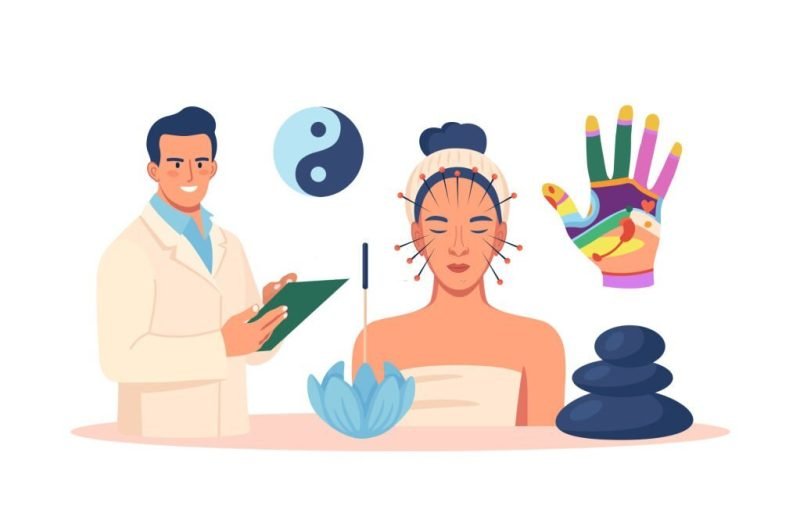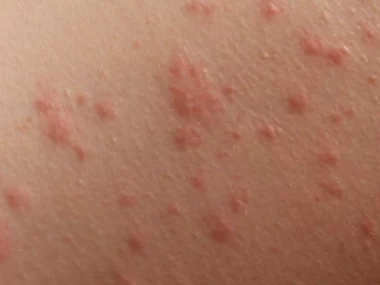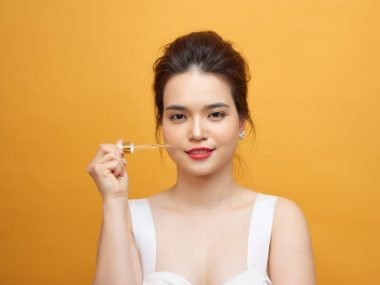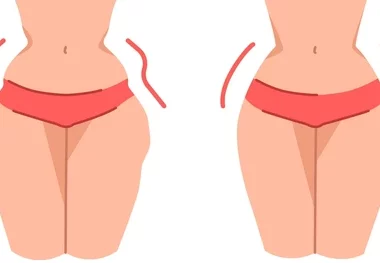Are you tired of spending countless hours and dollars on skincare products that promise radiant beauty but deliver minimal results? Look no further as we present the ultimate guide to face acupuncture points.
This comprehensive guide will delve into the ancient practice of acupuncture and how it can help you achieve the radiant beauty you desire. Acupuncture has been used for centuries to promote overall health and well-being; its benefits for the face are no exception. By targeting specific acupuncture points on the front, this non-invasive technique stimulates blood circulation, boosts collagen production, and rejuvenates the skin, resulting in a youthful and glowing complexion.
Whether you’re dealing with fine lines, wrinkles, acne, or dull skin, our guide will walk you through the various acupuncture points and techniques that can help you achieve the radiant beauty you’ve always dreamed of. Say goodbye to expensive beauty treatments and hello to a natural and effective way to enhance your beauty.
Understanding Face Acupuncture Points
Acupuncture is an ancient Chinese practice that involves inserting thin needles into specific points on the body to stimulate energy flow and promote healing. When it comes to facial acupuncture, these points are strategically chosen to target areas of concern and improve the overall health and appearance of the skin.
The face has numerous acupuncture points, each with its own unique benefits. These points are located along meridians, which are energy channels that run throughout the body. By stimulating these points, acupuncturists can help restore balance to the flow of energy, or in the face, resulting in improved skin tone, texture, and overall radiance.
The Benefits of Face Acupuncture for Radiant Beauty
Face acupuncture offers a wide range of benefits for achieving radiant beauty. One of the key advantages is its ability to stimulate blood circulation. When inserted into the face, acupuncture needles promote blood flow to the targeted areas, delivering essential nutrients and oxygen to the skin cells. This increased blood circulation helps to nourish the skin, improve its elasticity, and reduce the appearance of fine lines and wrinkles.
Another significant benefit of face acupuncture is its ability to boost collagen production. Collagen is a protein that gives the skin its structure and elasticity. As we age, the production of collagen naturally decreases, leading to sagging skin and wrinkles. Collagen production is stimulated by stimulating the acupuncture points on the face, resulting in firmer, plumper skin and a more youthful appearance.
In addition to improving blood circulation and boosting collagen production, face acupuncture helps relax facial muscles, reduce inflammation, and promote lymphatic drainage. These combined effects result in a brighter complexion, reduced puffiness, and a more even skin tone. Face acupuncture can also help with specific skin concerns such as acne, rosacea, and hyperpigmentation by addressing the underlying imbalances in the body.
How to Find a Qualified Face Acupuncture Practitioner
When considering face acupuncture as a treatment option, it’s essential to find a qualified practitioner with experience and expertise in this area. Here are some tips to help you find a qualified face acupuncture practitioner:
- Research and ask for recommendations: Research local acupuncturists specializing in facial acupuncture. Ask for recommendations from friends, family, or healthcare professionals who have had positive experiences with face acupuncture.
- Check credentials and certifications: Ensure the acupuncturist you choose is licensed and certified to practice acupuncture in your area. Look for additional certificates or training in facial acupuncture techniques.
- Read reviews and testimonials: Read reviews and testimonials from previous clients to get an idea of the practitioner’s expertise and the results they have achieved.
- Schedule a consultation: Consult the practitioner before committing to a face acupuncture session. This will allow you to discuss your concerns, ask questions, and assess whether you feel comfortable with the practitioner.
- Trust your instincts: Trust your instincts when choosing a face acupuncture practitioner. If something feels off or you’re uncomfortable with the practitioner, it’s okay to look for someone else.
Finding the right face acupuncture practitioner is crucial to ensure a safe and effective treatment. Take the time to do your research and choose a practitioner who aligns with your needs and goals.
Face Acupuncture Techniques and Tools
Face acupuncture involves various techniques and tools to target specific acupuncture points on the face. Here are some commonly used methods and tools in face acupuncture:
- Needle insertion: The primary technique used in face acupuncture involves inserting thin, sterile needles into specific acupuncture points on the face. These needles are typically left in place for a particular duration to stimulate the desired effects.
- Facial massage: Facial massage is often incorporated into facial acupuncture sessions to relax the facial muscles, improve blood circulation, and promote lymphatic drainage. Different massage techniques, such as gentle strokes, tapping, or kneading, may be used.
- Gua sha: Gua sha is a traditional Chinese technique that involves scraping the skin with a smooth-edged tool, typically made of jade or rose quartz. This technique helps to improve blood flow, reduce inflammation, and promote lymphatic drainage.
- Herbal masks and serums: Some practitioners may use herbal masks or serums during face acupuncture sessions to nourish and hydrate the skin. These masks and serums are often made with natural ingredients that promote skin health and radiance.
The techniques and tools used in face acupuncture may vary depending on the practitioner’s training and expertise. Discussing these details with your chosen practitioner to understand what to expect during your sessions is essential.
List of face acupuncture points explained
Acupuncture is a healing practice that involves inserting thin needles into specific points on the body to stimulate energy flow and promote healing. Acupuncture points, or acupoints, are where these needles are strategically placed to treat various health conditions.
Here are some of the common facial acupoints:
- Yintang (Third Eye Point): Yintang is located between the eyebrows, just above the bridge of the nose. This point is often used to relieve stress, anxiety, and headaches.
- Taiyang (Great Sun): The acupoint is found in the depression of the temple region, just outside the outer corner of the eye. It is beneficial for treating eye-related issues, such as eye strain, redness, and headaches.
- Yingxiang (Welcome Fragrance): Located on both sides of the nostrils, Yingxiang is commonly used for treating sinus congestion, allergies, and nasal issues. It is also known for promoting facial muscle relaxation.
- Sizhukong (Four Whites): Sizhukong is situated on the bony orbit at the outer corner of each eye. This acupoint helps relieve eye strain, redness, and dryness. It can also be used for certain types of headaches.
- Jiache (Jawbone): Jiache is located in the depression just below the cheekbone, near the jawline. Stimulating this point may help alleviate facial pain, toothaches, and TMJ (temporomandibular joint) disorders.
- Quanliao (Cheek Bone Crevice): Quanliao is situated on the lower border of the cheekbone, in line with the pupil when looking straight ahead. It is commonly used to relieve facial paralysis, twitching, and pain.
- Juliao (Great Bone Hole): The Juliao acupoint is found at the corner of the mouth, where the upper and lower lips meet. This point is often stimulated to treat facial spasms and drooling.
- Shangguan (Upper Passage): Shangguan is located at the midpoint of the eyebrow. Stimulating this point can help reduce forehead wrinkles, ease headaches, and relieve eye strain.
What to Expect During a Face Acupuncture Session
A face acupuncture session typically begins with an initial consultation, where the practitioner will assess your overall health, discuss your concerns, and create a treatment plan tailored to your specific needs. During the session, the practitioner will insert thin, sterile needles into specific acupuncture points on your face.
The needles used in face acupuncture are much finer than those used for body acupuncture, making the treatment relatively painless. You may feel a slight tingling or warmth at the insertion points, but discomfort is usually minimal. The needles are typically left in place for around 20-30 minutes. During this time, you can relax and let acupuncture work.
Many practitioners also incorporate additional techniques during the session, such as facial massage, gua sha, herbal masks or serums. These techniques complement the acupuncture treatment and can further enhance the results.
After the session, you may experience some redness or slight swelling in the treated areas, but this typically subsides within a few hours. Some clients feel relaxed and rejuvenated after a face acupuncture session, while others notice immediate improvements in their skin’s appearance. Multiple sessions are usually recommended to achieve optimal results, spaced a few weeks apart.
Common Concerns and Conditions Addressed by Face Acupuncture
Face acupuncture can address various concerns and conditions related to the skin’s health and appearance. Here are some common concerns that can be effectively addressed by face acupuncture:
- Fine lines and wrinkles: Face acupuncture stimulates collagen production and improves blood circulation, which helps reduce the appearance of fine lines and wrinkles.
- Dull or uneven skin tone: By promoting blood circulation and lymphatic drainage, face acupuncture can help improve the skin’s overall tone and texture, resulting in a brighter and more even complexion.
- Acne and blemishes: Face acupuncture can help address the underlying imbalances in the body that contribute to acne and other skin blemishes. By promoting hormonal balance and reducing inflammation, face acupuncture can help improve acne-prone skin.
- Sagging skin: The skin’s elasticity decreases as we age, leading to sagging and drooping. Face acupuncture stimulates collagen production and improves muscle tone, helping to lift and firm sagging skin.
- Puffiness and dark circles: Face acupuncture promotes lymphatic drainage and reduces inflammation, which can help reduce puffiness and dark circles under the eyes.
It is important to note that face acupuncture is a holistic approach to skincare and beauty. It addresses the underlying imbalances in the body that contribute to various skin concerns rather than simply treating the symptoms. By promoting overall health and well-being, face acupuncture can improve the skin’s appearance.
Tips for Maintaining Radiant Beauty After Face Acupuncture
After completing a course of face acupuncture sessions, there are several steps you can take to maintain and enhance the results. Here are some tips for maintaining radiant beauty after face acupuncture:
- Follow a skincare routine: Establish a consistent skincare routine that includes cleansing, moisturizing, and protecting your skin from the sun’s harmful rays. Choose products that are suitable for your skin type and address any specific concerns you may have.
- Stay hydrated: Drink plenty of water to keep your skin hydrated from the inside out. Hydration is essential for maintaining a healthy complexion and preventing dryness and dullness.
- Eat a balanced diet: Focus on eating a diet rich in fruits, vegetables, and other nutrient-dense foods. A well-balanced diet provides the necessary vitamins, minerals, and antioxidants for healthy skin.
- Protect your skin from the sun: Use sunscreen daily to protect your skin from harmful UV rays. Sun exposure can lead to premature aging, pigmentation issues, and an increased risk of skin cancer.
- Practice stress management techniques: Chronic stress can impact your skin’s health and appearance. Incorporate stress management techniques into your daily routine, such as meditation, deep breathing exercises, or engaging in activities you enjoy.
- Schedule maintenance sessions: Consider scheduling maintenance face acupuncture sessions to keep your skin in optimal condition. These sessions can prolong the results achieved during the initial treatment course.
By incorporating these tips into your lifestyle, you can maximize the benefits of face acupuncture and maintain a radiant and youthful complexion.
Frequently Asked Questions About Face Acupuncture
Question 1. Is face acupuncture painful?
Answer: Face acupuncture is generally not painful. The needles used are excellent; most people only feel slight tingling or warmth during the treatment. Any discomfort is usually minimal and temporary.
Question 2. How many face acupuncture sessions are needed to see results?
Answer: The number of sessions needed can vary depending on individual needs and goals. Typically, 6-10 sessions are recommended, spaced a few weeks apart. However, some people may start noticing improvements after just a few sessions.
Question 3. Are there any side effects of face acupuncture?
Answer: Face acupuncture is generally safe when performed by a qualified practitioner. Some people may experience slight redness or swelling in the treated areas. Still, these side effects are usually temporary and subside within a few hours.
Question 4. Can face acupuncture help with acne scars?
Answer: Face acupuncture can help improve the appearance of acne scars by promoting collagen production and improving blood circulation. However, the effectiveness of the treatment may vary depending on the severity and type of scars.
Question 5. Can face acupuncture replace other skincare treatments?
Answer: Face acupuncture can complement other skincare treatments, but it may not replace them entirely. It’s important to discuss your skincare goals and concerns with a qualified practitioner to determine the best approach for you.
Conclusion
Face acupuncture points is a natural and effective way to achieve radiant beauty. By targeting specific acupuncture points on the face, this ancient practice stimulates blood circulation, boosts collagen production, and rejuvenates the skin. Whether you’re dealing with fine lines, wrinkles, acne, or dull skin, face acupuncture can help address these concerns and enhance your natural beauty.
It’s important to note that while facial acupuncture can benefit various conditions, it should be performed by a qualified and licensed acupuncturist to ensure safety and effectiveness. Acupuncture is generally considered safe, but individual responses may vary, and some people may have specific contraindications. Always consult with a healthcare professional before undergoing any new treatment.
Remember, achieving radiant beauty is not just about external treatments but also about maintaining overall health and well-being. By incorporating a holistic approach to skincare and following the tips provided, you can enjoy long-lasting results and a glowing complexion.
Say goodbye to expensive beauty treatments and hello to the natural and effective benefits of face acupuncture. Embrace this ancient practice and unlock the radiant beauty you’ve always dreamed of.




